

Do you want to improve in your climbing? Improvement can be very desirable, but for many of us it isn't as easy as it appears. I believe that regardless of ability, goals, or climbing styles, improvement starts with having and applying a good basic attitude. I'm writing this article to promote a genuine, positive, aware, and determined approach to climbing and improving, which people can use for their own climbing in a style that suits them. Many of the points might seem simple or self-evident - but just because they are simple doesn't mean they are easy to apply, and some are surprisingly overlooked.
It's worth noting that you can and should apply however much improvement-orientated attitude is right for you and for how important climbing is to you. Like in many areas of life, balance is important, so take and apply what you need at your level of dedication.
Disclaimer:
Push yourself at your own risk and only if you are sure you are a safe climber. Climbing can be dangerous if you get the safety system wrong, and it is your responsibility to get it right.
Improvement is a path irrespective of age, ability, grade or even years climbing. However it involves pushing yourself and therefore, particularly for trad climbing, it requires a high level of competence and safety, including sound judgement, careful protection placing, and competent ropework - this article assumes that readers will those. There appears to be a relatively recent trend of climbers pushing themselves on trad routes and injuring themselves due to poor use of the safety system. This article is not intended for them, and a learning to lead course might be more suitable.
Why improve?
Improvement is a choice. Some people don't want to improve, they are happy climbing within their ability and within their comfort zone, a great and valid path. Other people do want to improve, and having a clear awareness as to whether you genuinely want to improve is a good starting point. You might want to improve to:
- Overcome personal challenges - as part of personal development.
- Follow inspiration - often inspiring routes are challenging ones.
- Open up more choice and potential - there will be simply more routes you can climb.
- Or maybe you just want to without a clear reason....if the desire is strong enough, do you need a reason?
What is improvement?
Genuine improvement is twofold, and can involve either or both as you desire:
1. Climbing more difficult routes - irrespective of grade or type of route (and including diversifying into other styles of route).
2. Climbing better (e.g. smoother, more efficiently, more confidently, technically better, etc) - improving your overall ability irrespective of the difficulty of the route.
Genuine improvement does not just involve:
1. Merely jumping up grades - which can be "achieved" without any actual increase in ability nor difficulty, and even when it is an actual increase it can often be due to someone's ability being a lot higher than they realised, but they hadn't actually tried to improve. A lot of grade jumps can be summarised by "Actually trying" - important, but not the whole story.
2. Seeming to attain a higher standard by climbing in a different genre (e.g. redpointing) - which is simply moving the goalposts so they are irrelevant to your previous standard. If you were running a mile, and then cycled that mile to beat your running record, that wouldn't be a true improvement. The same applies to different climbing styles - they might be useful but aren't directly comparable.
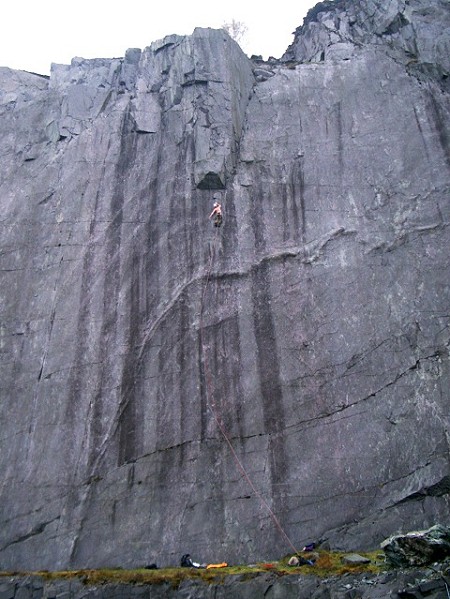
Attitude:
The right attitude is the crucial part of improving with climbing. This is where it all stems from, your fundamental attitude and approach towards climbing.
1. Love climbing.
This is a necessary precursor to improvement - it's a potentially long and possibly difficult journey, so you will need to love climbing to make it worthwhile. Why waste all the effort on something you're not passionate about? Some aspects might occasionally be hard or unpleasant but if you love the activity overall, you can love the process and stick with it.
2. Desire to improve.
You must genuinely want to improve, and be honest with yourself as to whether it is a true desire and suitable for you. This article is partly to encourage people to ask that question of themselves. It's a simple question but the answer is crucial!
3. Accept the challenge.
...and enjoy the challenge. Climbing is intense - physically, mentally, and emotionally, and improving can be hard - physically, mentally, and emotionally. Realise the battle you might face, and that a love of climbing will make it worthwhile. 4. Realise your potential.
This doesn't mean achieving it - yet. It means having a more open and forward-looking view of what you might be capable of and might achieve. It's easy to feel defined by your current abilities and trapped by that definition. Be aware of that and avoid the pitfall of pigeon-holing yourself and your abilities and you will leave yourself open to many more possibilities.
5. Have patience.
Be aware that improvement to a desired level may or may not take a long time. There is no set time limit beyond your own lifespan, and the age "limits" are much longer than you might think (e.g. Ben Moon, Ron Kauk, Stevie Haston, etc). Weather, time, and other factors will get in the way, accept this as best you can, and try to remember that the climbs will always be there. Take advantage of opportunities to try them.
6. Go on your personal journey.
Your climbing path is a personal one - there is no comparison to others, their standard, nor their speed of improvement. Your improvement is an individual challenge which solely depends on yourself exploring your personal potential. Keeping this in mind can clear away a lot of the clutter that gets in the way of improvement, and can help you progress in the best way for you.
For example, take heed that grades are merely a numerical indication - the numbers are irrelevant, only the meaning (more difficulty thus more challenge) is useful. Use them as a guide with needed, don't let them use you.
Also how you improve is up to what works for you and what is desirable for you. You might need to get lots of mileage in, or you might need to start pushing yourself a lot harder (bear in mind quality over quantity of climbing experiences). You might be able to stick to one type of climbing or you might benefit from trying different types. Find what suits you.
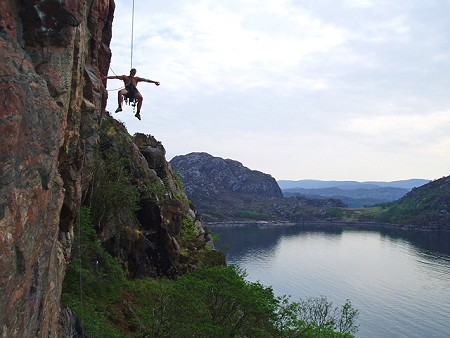
Time to put your attitude and approach into action. Try to act it out all the time - live the best approach to your climbing.
1. Dedication.
Be focused on actually climbing. Not exclusively, there needs to be a balance, but keep in mind if you want to improve at climbing you have to focus on climbing. Not on running, cycling, walking, mountaineering, skiing, surfing, photography, etc. These have value in their own right (and might be your true path rather than climbing), and as balancing activities, and as supporting activities (for fitness, strength, recovery etc), but how well you progress with climbing will depend in part on how well you can, and want to, focus on it.
2. Determination.
AKA "Actually Try". A major part of improvement is Actually Trying - make Actually Try your motto when you put the acceptance of the challenge into action. Try hard and work hard - it's fun work, and it's what you want, right? Don't give up on the challenge; don't give up on individual routes.
If you're pushing yourself then, despite the effort you put in, you'll sometimes fail to get up a route or problem. This can be frustrating, but learn to accept this and view it in more progressive terms - it's a failure of ascent, but not a failure to learn, as much can be gained from why you didn't make it. It also shows you are pushing yourself and truly exploring your limits.
A similar approach applies to falling. Falling is a possible result of pushing yourself, and a likely risk even if it doesn't actually occur. Assuming you are competent with the safety system, this will need to be accepted logistically and mentally. Being prepared to fall can be a major challenge and might need particular attention.
3. Awareness.
Awareness of one's climbing and all the various facets of it is a crucial part of climbing and improving, including learning, having and applying that awareness. It is often the first step towards practical progress. Be ruthlessly honest with yourself, in particular to tackle the real issues with your climbing. You might not always like what you find when you're highly aware of your own climbing, not least because it might show a more challenging path to progress on, but it will be crucial in improving.
If you're not sure about your own awareness and judgement, it might be beneficial to get some trusted friends to evaluate your climbing traits and give you feedback. Sometimes being stuck in habits and "your way" can make it hard to be fully aware of that way, so external feedback could help.
4. Keep learning.
Learning IS improving - once you're aware of how you're climbing and what the real issues are, you can learn to tackle them and develop as a climber. Learning can involve:
- Staying open to ideas, keeping experimenting and playing around.
- If you're not satisfied with what you're doing and how you're climbing, analyse the situation.
- Learning from both mistakes and successes.
- Learning from challenges that feel hard - what the difficulties were, how you overcame them, and learning from challenges that feel easy - what you did right, what you managed to apply.
Aside from learning whilst being challenged, every climbing situation has the potential for learning. Even in innocuous situations you can learn from small things - placing a bit of gear better, finding a new body position etc.
5. Training.
There are a lot of complicated and regimented training books, manuals, and courses out there marketed at climbers. As part of your own path of improvement, your awareness might should many areas that can be improved by training and thus a detailed plan might be useful. But whilst there are obvious physical benefits to be made, for many climbers following basic training principles doesn't have to be that complicated. Most of it is a matter of common sense:
1. Train your weaknesses - ruthless self-honesty applies here. Your true weaknesses might not be the most fun ones to train! E.g. you might get struggle with getting pumped, and also really like bouldering training, so boulder more to try to overcome the pump, whilst less appealing stamina training would be more beneficial. It can useful to strike a balance between pleasurable training and the most beneficial training.
2. Keep pushing yourself - remember you are training to improve, not to stay at the same level. Therefore, simply, you need to keep pushing yourself at least a little bit for your body (and mind) to adapt to the challenge and be capable of tackling new levels. This does NOT mean pushing yourself excessively every time nor courting injury by over-training, but it does mean keeping a constant (if sometimes mild) level of challenge.
3. Avoid injury, be careful and listen to your body - as simple as it says, keep aware and use good judgement (e.g. warming up, warming down, taking rest days, not training when tired, varying training, balancing muscle usage, etc).
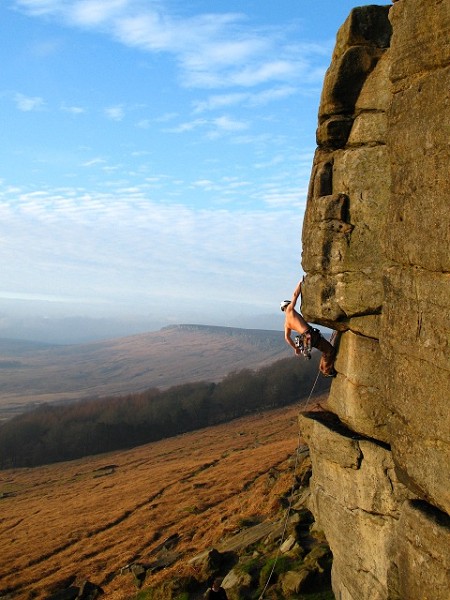
When you're climbing at your limit, details matter. Climbing is enough of challenge, so why hamper yourself in aspects that are easily controllable? Climbing smart is part of improving, but also part of knowing everything external is stacked in your favour (or at least known about), so you know what genuine challenge you are facing. Use tactics!
Some examples:
Leave your tight shoes off until the last minute to reduce foot pain, clean them thoroughly, check you have enough chalk, make sure you rack up right, choose the right clothing for the route, have a good look at it and plan out what you might do, don't take up superfluous weight, keep aware of conditions, adapt accordingly, talk to your belayer and make sure they are fully supporting you, etc.
It might seem obvious, but pushing yourself at your limit, one small thing can cause disproportionate problems - or enable a great ascent.
It's worth noting the importance of climbing partners: Most of us are not automatons who can apply ourselves perfectly regardless of our company, so who we interact with - particular climbing partners - can be particularly important. Finding the right people to climb with (likely to be ones who are positive, supportive, and respectful of your personal journey) can be very important, but seeking strength from within regardless of external interactions can also be useful.
In summary:
Next climb, next training session, next day out, next trip away, ask yourself these questions:
Do you love climbing?
Do you genuinely want to improve?
Do you accept the challenge you face?
Do you realise the potential you may have and want to explore that?
Are you patient enough to cope with that journey and challenge?
Are you doing it as part of your own journey?
And, are you going to put your positive and determined attitude into action?
Whatever you honestly answer to yourself, with whatever degree of dedication, that is what you should follow - be true to yourself and true to your desire to improve, and you will.
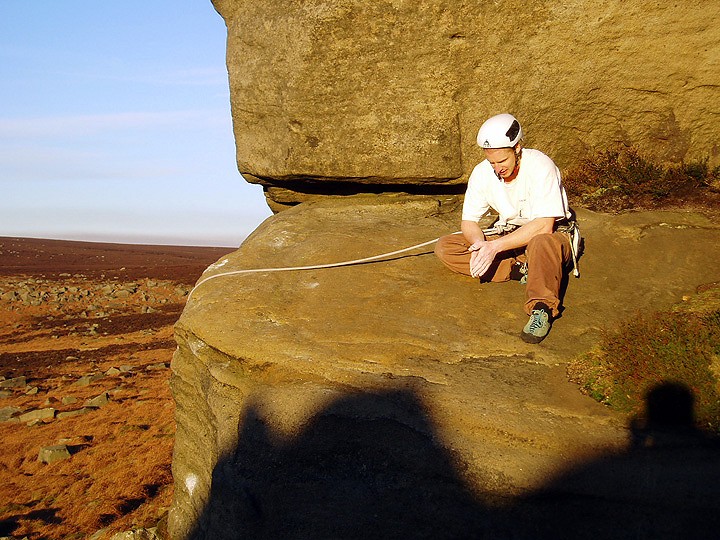
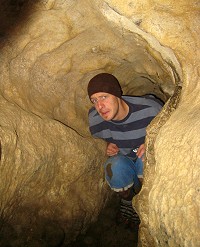
"What qualifies me to write this article is not my successes, not how I've improved (although I have - including achieving my long-standing goals, returning to similar goals after injury, and knowing I can exceed my goals in future), but my failures, how I've fought and struggled and overcome and learnt to achieve what I have. I understand how hard it can be. Climbing is a highly intense activity which makes it so pleasurable and so worthwhile, but also makes it a highly intense personal challenge. That is what I have faced for a long time and learnt a lot from."
Thanks to all the people who gave useful and varied feedback on early versions of this article - you know who you are.
- Finding Crag X - A top secret diary, by Fiend 19 May, 2008
- DESTINATION GUIDE: Ceuse, France 11 Nov, 2006
- Trad E0: filling the gap between HVS and E1? 8 Dec, 2003
- New Zealand 28 Jul, 2003



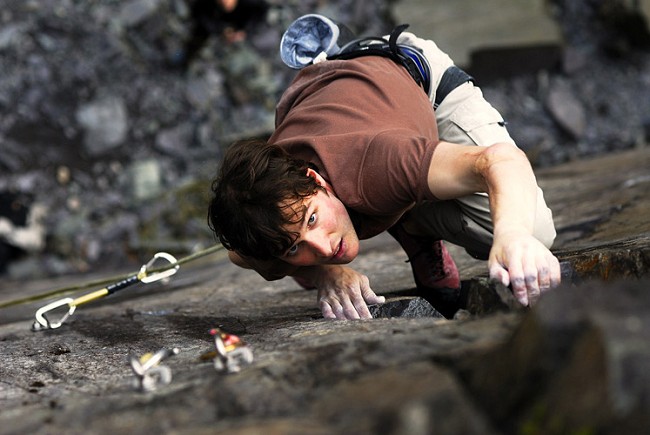













Comments